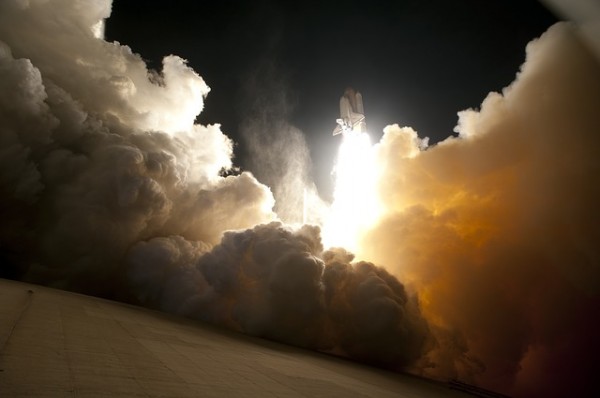By S. Rina, | November 05, 2016

SpaceX engineers have found the reason for the explosion of a Falcon 9 rocket earlier this year. (Pixabay)
SpaceX engineers say that they have identified the reasons behind Falcon 9 rocket explosion earlier this year. The company's CEO Elon Musk said that the problem behind the accident was surprising and unique.
The SpaceX rocket had exploded in September this year, a little before its scheduled launch. The company expects to resume the launch in December.
Like Us on Facebook
Speaking to CNBC, Musk said that it seems like the company has identified the issue behind Falcon 9 explosion. He explained that during the fueling stage, the extremely cold temperature of the propellant turned liquid oxygen into solid form, setting off a series explosion that destroyed the rocket. The SpaceX CEO said that the investigative team replicated the collapse of the carbon fiber composite containers for helium.
SpaceX started using super chilled oxygen to fuel Falcon 9 rocket in 2015. The chilled oxygen had a temperature of -340 degrees, while normally the oxygen used for propelling rockets is cooled to -300 degrees. However, the presence of liquid helium turned the oxygen even cooler and froze it solid.
The explosion not only caused the loss of the rocket and the satellite, it also dealt a blow to the goodwill enjoyed by SpaceX. NASA is now using Orbital ATK for its next flight, using a bigger rocket to allow for more cargo. The flight will take place in the spring. SpaceX believes that it will be able to start using the Falcon 9 again by the mid of December.
SpaceX is scheduled to carry NASA astronauts to the International Space Station next year. The company plans to use the same fueling method for astronauts' flight as it used for the Falcon 9.
-
Use of Coronavirus Pandemic Drones Raises Privacy Concerns: Drones Spread Fear, Local Officials Say

-
Coronavirus Hampers The Delivery Of Lockheed Martin F-35 Stealth Fighters For 2020

-
Instagram Speeds Up Plans to Add Account Memorialization Feature Due to COVID-19 Deaths

-
NASA: Perseverance Plans to Bring 'Mars Rock' to Earth in 2031

-
600 Dead And 3,000 In The Hospital as Iranians Believed Drinking High-Concentrations of Alcohol Can Cure The Coronavirus

-
600 Dead And 3,000 In The Hospital as Iranians Believed Drinking High-Concentrations of Alcohol Can Cure The Coronavirus

-
COVID-19: Doctors, Nurses Use Virtual Reality to Learn New Skills in Treating Coronavirus Patients







